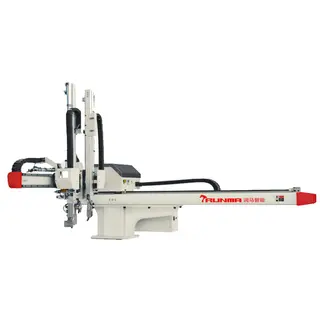Non Telescopic Flanged U-Joint - UCX Type

Key Specifications / Features
Detail Information

| Type |
Rotational Diameter mm |
Norminal Torque Tn kN.m |
Fatigue Torque Tf kN.m |
Axial Swing Angle β° |
Dimension,mm |
Inertial Moment I kg.m² |
Weight G kg |
|||||||||||
| Lmin |
D1 (js11) |
D2 (H7) | D3 | Lm | n-d | k | t | B (h9) | g | Lmin |
Increase per 100mm |
Lmin |
Increase per 100mm |
|||||
| UCX 180 | 180 | 12.5 | 6.3 | ≤25 | 560 | 155 | 105 | 114 | 110 | 8-17 | 17 | 5.0 | - | - | 0.248 | 0.0070 | 58 | 2.8 |
| UCX 225 | 225 | 40 | 20 | ≤15 | 610 | 196 | 135 | 152 | 120 | 8-17 | 20 | 5.0 | 32 | 9.0 | 0.636 | 0.0234 | 93 | 4.9 |
| UCX 250 | 250 | 63 | 31.5 | ≤15 | 715 | 218 | 150 | 168 | 140 | 8-19 | 25 | 6.0 | 40 | 12.5 | 1.352 | 0.0277 | 143 | 5.3 |
| UCX 285 | 285 | 90 | 45 | ≤15 | 810 | 245 | 170 | 194 | 160 | 8-21 | 27 | 7.0 | 40 | 15.0 | 2.664 | 0.0510 | 220 | 6.3 |
| UCX 315 | 315 | 125 | 63 | ≤15 | 915 | 280 | 185 | 219 | 180 | 10-23 | 32 | 8.0 | 40 | 15.0 | 4.469 | 0.0795 | 300 | 8.0 |
| UCX 350 | 350 | 180 | 90 | ≤15 | 980 | 310 | 210 | 267 | 194 | 10-23 | 35 | 8.0 | 50 | 16.0 | 7.388 | 0.2219 | 412 | 15.0 |
| UCX 390 | 390 | 250 | 125 | ≤15 | 1100 | 345 | 235 | 267 | 215 | 10-25 | 40 | 8.0 | 70 | 18.0 | 13.184 | 0.2219 | 588 | 15.0 |
| UCX 440 | 440 | 355 | 180 | ≤15 | 1290 | 390 | 255 | 325 | 260 | 16-28 | 42 | 10.0 | 80 | 20.0 | 23.250 | 0.4744 | 880 | 21.7 |
| UCX 490 | 490 | 500 | 250 | ≤15 | 1360 | 435 | 275 | 325 | 270 | 16-31 | 47 | 12.0 | 90 | 22.5 | 40.750 | 0.4744 | 1173 | 21.7 |
| UCX 550 | 550 | 710 | 355 | ≤15 | 1510 | 492 | 320 | 426 | 305 | 16-31 | 50 | 12.0 | 100 | 22.5 | 68.480 | 1.3570 | 1663 | 34 |
| UCX 620 | 620 | 1000 | 500 | ≤15 | 1690 | 555 | 380 | 426 | 340 | 10-38 | 55 | 12.0 | 100 | 25.0 | 127.530 | 1.3570 | 2332 | 34 |
1. Tf: Permitted torques according to fatigue strength under the alternating load.
Send your message to this supplier
FAQs
What is a Non-Rising Stem Gate Valve?
A valve where the stem does not move vertically but rotates internally to raise or lower the gate. This design is ideal for installations with limited vertical space.
How Does a Non-Rising Stem Gate Valve Work?
The handwheel turns the stem, which in turn moves the gate up or down inside the valve body without changing the external height of the stem.
How Does a Rising Stem Gate Valve Work?
The handwheel lifts the stem and gate together, providing a visual indication of whether the valve is open or closed.
Which Valve Should I Choose?
Use a rising stem valve for above-ground applications where visibility and ease of maintenance are important.
Use a non-rising stem valve for underground or space-limited installations.
Conclusion
The choice between rising stem and non-rising stem gate valves depends on your specific application needs. For clear valve status indication and easy maintenance, go with a rising stem valve. For compact installations, a non-rising stem valve is the better option.













